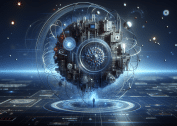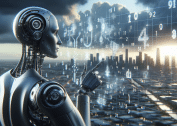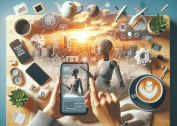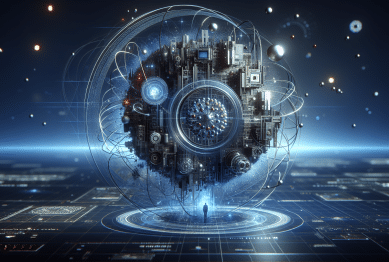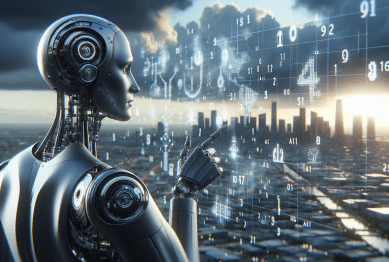Artificial intelligence is reshaping digital life, powering everything from smart assistants to healthcare tools. Dive into how AI impacts technology, discover key applications, and explore what it means for everyday life and the future of work.
Understanding Artificial Intelligence Fundamentals
Artificial intelligence (AI) refers to the development of computer systems built to perform tasks that previously required human intelligence. These tasks include image recognition, natural language understanding, problem-solving, and decision-making. AI systems use algorithms, machine learning, and vast data resources to continuously improve their performance. Whether it’s predicting weather patterns or guiding navigation, AI serves as the engine powering smarter technologies and digital tools.
Central to AI’s growth is machine learning, a subfield that lets software learn from large sets of information. Machine learning models are found in industries as diverse as retail and finance, where data patterns drive predictions or automate operations. With advances in deep learning and neural networks, computers can now interpret complex images and even recognize speech as accurately as humans in some scenarios. AI technology keeps evolving as algorithms become more sophisticated and more data is available for training.
The history of AI stretches from mathematical theories in the early 20th century to today’s breakthroughs powering smart home devices. Many forms of AI, like supervised learning, require labeled data to recognize patterns, while unsupervised models can find associations independently. Through reinforcement learning, AI systems learn from feedback. This diversity in AI approaches makes it possible to customize intelligent systems for nearly every domain imaginable, underlining its transformative potential in technology and science.
Real-World Applications Transforming Daily Life
Examples of AI in daily life are abundant. Smart assistants such as Siri, Alexa, and Google Assistant rely on speech recognition and natural language processing to help users set reminders, play music, or control home devices. Streaming platforms use AI-powered recommendation engines to suggest content based on viewing history and preferences, creating a tailored user experience that continually adapts to behavior. Even email spam filters and fraud detectors depend on machine learning algorithms to identify suspicious activities.
AI has rewritten the approach to navigation and mobility. Ride-hailing apps optimize routes with real-time AI analytics, while self-driving vehicles use sensors and computer vision to interpret surroundings. Healthcare is another area where AI applications make a meaningful impact, with diagnostic tools using image analysis to detect illnesses, and predictive algorithms assessing patient data for early intervention. By making decisions faster and more accurately, AI builds trust in safety-critical environments.
Retailers employ AI solutions for inventory management, product suggestions, and customer service chatbots that can answer questions around the clock. Virtual try-on tools and recommendation systems personalize the shopping experience. In finance, AI-powered risk assessments help institutions evaluate creditworthiness, manage investments, and reduce fraudulent transactions. From simplifying mundane tasks to introducing innovative solutions, AI is becoming inseparable from convenient, connected living in modern society.
The Impact Of AI On Employment And Workplaces
As AI automates repetitive duties, workplaces change. Routine jobs, previously done by hand, are now supported by AI-driven systems that process data faster and with fewer errors. This shift frees professionals to focus on creative, analytical, or interpersonal tasks. The impact is visible in fields like logistics, where AI software optimizes delivery routes, and in HR departments, where AI screens applications and schedules interviews.
AI introduces concerns and opportunities for employees and organizations. While automation can replace certain job functions, new roles are also created to oversee, design, and improve intelligent systems. Adaptive skills such as critical thinking and data analysis have become increasingly valuable. Companies investing in AI often encourage staff to upskill with online courses, workshops, and collaborative projects. These shifts highlight the need for lifelong learning in the digital era.
There’s growing interest in the ethical use of AI at work. Regulators, employers, and employees are discussing fairness, privacy, and accountability as intelligent tools become more common. Transparent AI systems and ongoing monitoring help ensure that workplace decisions remain unbiased and support diversity. As organizations adopt AI, clear communication and ethical frameworks are key to building trust and harnessing technology for productive, inclusive outcomes.
Harnessing AI In Science And Research
Artificial intelligence accelerates scientific discovery by quickly sorting through massive datasets. Researchers use AI to analyze genetic information, track disease outbreaks, and simulate environmental changes. In climate science, machine learning models process complex weather and oceanographic data, providing more accurate forecasts and insights into global patterns. AI’s predictive power supports rapid advancements in fields that generate large volumes of information, making it an essential research tool.
AI-powered simulations help scientists run experiments that would otherwise be too resource-intensive or time-consuming. For example, drug discovery relies on virtual screening of molecules, speeding up the process of finding promising compounds. In astronomy, AI algorithms sift through images from space telescopes to detect new objects or phenomena. By automating repetitive analysis, AI liberates researchers to focus on breakthroughs and theoretical modeling.
Open-source AI tools and frameworks contribute to innovation by enabling global collaboration among researchers. Citizen science initiatives now harness AI for wildlife tracking, environmental monitoring, and educational projects. With responsible integration, AI amplifies scientific creativity, breaks down barriers to participation, and brings a new wave of problem solvers into global challenges. Science and technology are undeniably intertwined with intelligent solutions, fostering a culture of discovery and progress.
Balancing Innovation With Responsible AI
The rise of artificial intelligence brings ethical, legal, and social questions. Decision-making transparency, algorithmic bias, and user privacy top the list of concerns for policymakers, engineers, and communities. Regulatory frameworks are being developed by governments and international bodies to ensure AI benefits are distributed fairly and that risks are managed proactively (Source: https://ec.europa.eu/info/index_en).
Responsible AI design emphasizes safeguarding against discriminatory outcomes by requiring diverse training data and fairness audits. Companies and institutions publish ethical codes and promote interdisciplinary teams to evaluate the impact of AI on society. There’s also momentum behind explainable AI, where algorithms provide insight into how they make choices, giving users confidence and transparency in the results they receive (Source: https://ai.google/responsibility/).
User awareness is critical. Many organizations conduct public engagement activities—such as town halls and feedback sessions—to understand impacts and address fears. Education campaigns equip individuals to recognize AI-driven tools and to use them responsibly. As AI becomes deeply rooted in society, collaborative efforts among developers, users, and regulators will be crucial for ensuring innovation aligns with ethical standards and public trust.
Preparing For The AI-Driven Future
AI’s influence will only grow as technology advances. Preparing for the future means staying informed about developments, seeking out educational resources, and understanding the opportunities and risks of intelligent tools. Digital literacy programs in schools and community centers introduce learners of all ages to responsible AI use, helping bridge gaps in access and knowledge (Source: https://www.publicschoolreview.com/blog/preparing-students-for-the-impact-of-artificial-intelligence).
Upskilling with data science, programming, and critical thinking becomes increasingly important across professions. Online learning platforms offer accessible courses in AI fundamentals, coding, and ethics—some provided for free or at low cost by universities and nonprofit organizations. Community workshops and webinars foster hands-on experience and ongoing networking, nurturing a culture where technology is understood, not feared. This prepares societies to adapt quickly as new AI-powered solutions emerge.
Continuous dialogue and collaboration across sectors create a resilient ecosystem. Businesses, schools, and governments that invest in AI literacy and cross-disciplinary teams are more likely to drive positive societal outcomes and reduce unintended consequences. Ultimately, nurturing curiosity, responsibility, and adaptability ensures that AI is used thoughtfully, making technological advancement a benefit for everyone.
References
1. Russell, S., & Norvig, P. (2020). Artificial Intelligence: A Modern Approach. Retrieved from https://www.pearson.com/en-us/subject-catalog/p/artificial-intelligence-a-modern-approach/P200000005163/9780134610993
2. European Commission. (n.d.). Artificial Intelligence. Retrieved from https://ec.europa.eu/info/index_en
3. Google AI. (n.d.). Responsible AI Practices. Retrieved from https://ai.google/responsibility/
4. Public School Review. (n.d.). Preparing Students for the Impact of Artificial Intelligence. Retrieved from https://www.publicschoolreview.com/blog/preparing-students-for-the-impact-of-artificial-intelligence
5. National Institute of Standards and Technology. (2022). Artificial Intelligence Risk Management Framework. Retrieved from https://www.nist.gov/itl/ai-risk-management-framework
6. Stanford University. (2021). Artificial Intelligence and Life in 2030. Retrieved from https://ai100.stanford.edu/2016-report



